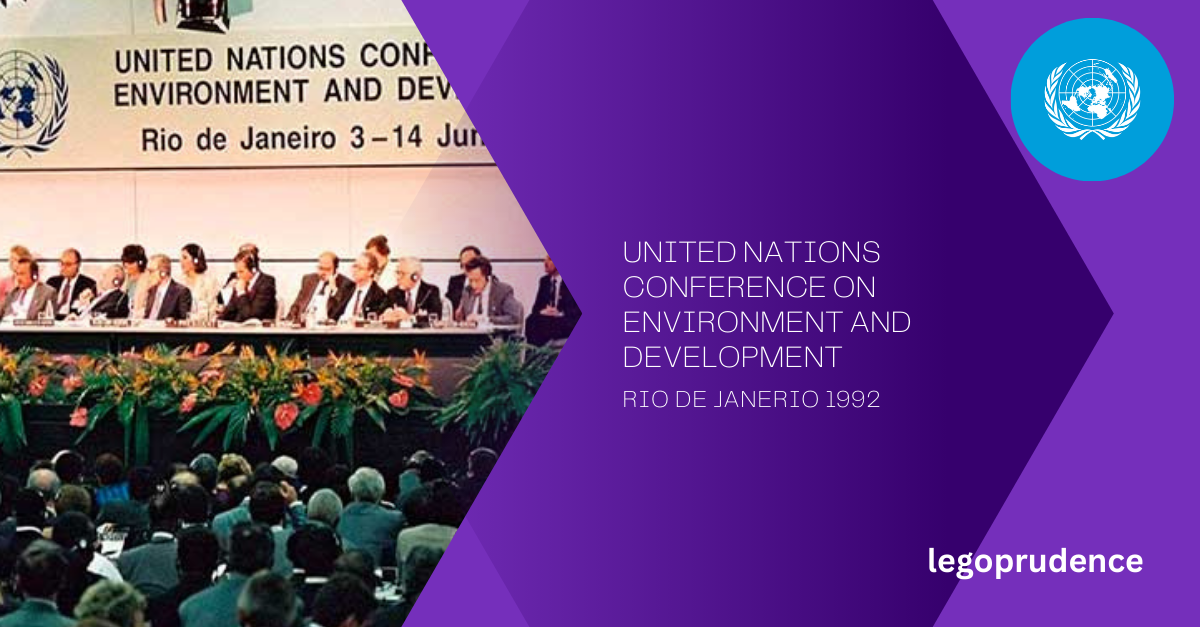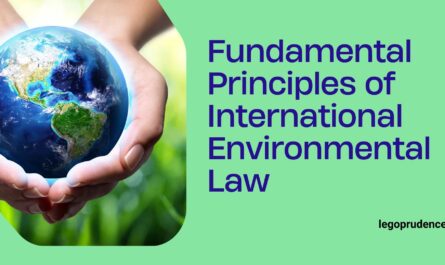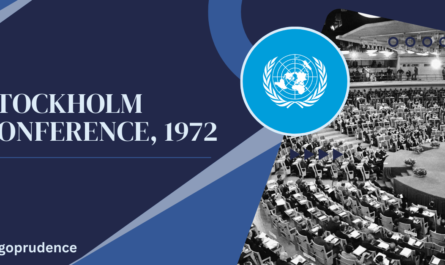Introduction
The United Nations Conference on Environment and Development, commonly known as the Earth Summit or Rio Summit, held in Rio de Janeiro in 1992, marked a pivotal moment in global environmental governance. This landmark event, building upon the legacy of the 1972 Stockholm Conference, brought together representatives from 172 countries, including a significant number of Heads of State and Government, to address pressing environmental challenges facing the planet.
Organized by the United Nations and led by Secretary General Maurice Strong, the Rio Summit aimed to set forth a new paradigm of cooperation among nations, sectors, and individuals to promote environmental protection and sustainable economic development in harmony with nature. The conference emphasized the importance of international cooperation in safeguarding the Earth and fostering a more sustainable future for all.
With a focus on creating a framework for global environmental action, the Rio Declaration outlined principles for cooperation between countries to protect, preserve, and restore the Earth’s ecosystems. The summit laid the groundwork for critical agreements and initiatives related to climate change, biodiversity, sustainable development, and environmental protection.
Despite the significant progress made at the Rio Summit, including the establishment of the United Nations Framework Convention on Climate Change (UNFCCC) and the creation of the Conference of the Parties (COP) as its supreme body, challenges remain. While the agreements and declarations emerging from Rio set ambitious goals, the lack of binding mechanisms has led to varying levels of implementation and adherence over the years.
The Rio Summit’s contributions to shaping the global environmental agenda, fostering cooperation on sustainable development, and raising awareness about pressing environmental issues have had a lasting impact on international efforts to address the threats facing our planet.
Features of Earth Summit
The Earth Summit, officially known as the United Nations Conference on Environment and Development (UNCED), held in Rio de Janeiro in 1992, was a landmark event that addressed pressing global environmental issues and set the stage for sustainable development initiatives. Here are the main features of the Earth Summit in 1992:
- Global Representation: The summit brought together representatives from 178 countries, including heads of state, government officials, and delegates from various organizations, demonstrating broad international engagement.
- Focus on Environmental Issues and Sustainable Development: The main agenda of the summit was to address critical global environmental challenges and promote sustainable development, emphasizing the interconnection between environmental protection, social equity, and economic development.
- Adoption of Environmental Treaties: The Earth Summit resulted in the adoption of significant environmental treaties, including the United Nations Framework Convention on Climate Change (UNFCCC) and the Convention on Biological Diversity (CBD), signaling a commitment to addressing climate change and biodiversity conservation.
- Agenda 21: The summit produced Agenda 21, a comprehensive action plan for sustainable development that outlined `strategies for addressing environmental, social, and economic challenges and promoting sustainability in the years ahead.
- Common but Differentiated Responsibilities: The principle of common but differentiated responsibilities was reaffirmed at the summit, recognizing the varying responsibilities of developed and developing countries in environmental protection and sustainable development efforts.
- Involvement of NGOs and Stakeholders: The Earth Summit emphasized the importance of involving non-governmental organizations (NGOs) and other stakeholders in environmental decision-making processes, recognizing the value of diverse perspectives and partnerships in addressing environmental issues.
- Rio Declaration: The Rio Declaration, containing 27 principles, served as a roadmap for environmental and economic progress, reaffirming the ideals of sustainable development and guiding future initiatives towards sustainability.
- Forest Principles: The Forest Principles stressed the right of governments to use their resources in line with sustainable forest management practices, highlighting the importance of responsible forest stewardship.
- Policies to Address Global Warming: The Earth Summit unveiled policies aimed at mitigating the threats of global warming and addressing the global impact of climate change, underscoring the need for coordinated action on climate-related challenges.
- Continuation of Stockholm Convention Principles: The Earth Summit announced the continuation of the principles laid out in the Stockholm Convention of 1972, emphasizing the ongoing commitment to international environmental governance and cooperation.
- Promotion of International Partnership: There was a focus on establishing international partnerships to address the interconnected issues of development and the environment, highlighting the importance of collective action on a global scale.
- Emphasis on Sustainable Development and Poverty Alleviation: The summit emphasized sustainable development to ensure that resources are sufficient for current and future generations, while also focusing on poverty eradication as a critical component of sustainable development efforts.
- Responsibility of Developed Nations: The principle that developed nations should take responsibility and support other countries in achieving the goals of sustainable development was underscored, emphasizing the importance of global cooperation and solidarity in addressing environmental challenges.
The Earth Summit in Rio de Janeiro in 1992 laid the groundwork for international cooperation on environmental issues, setting a precedent for sustainable development efforts and emphasizing the need for collective action to ensure a more sustainable and equitable future for all.
Principles of Earth Summit
The principles of the Earth Summit, also known as the United Nations Conference on Environment and Development (UNCED), held in Rio de Janeiro in 1992, reflect a comprehensive framework for sustainable development and environmental conservation. Here is a discussion of the principles outlined during the Earth Summit:
- Principle 1: Human-Centric Sustainable Development- The first principle emphasizes that human beings are at the core of concerns for sustainable development, entitled to a healthy and productive life in harmony with nature. It underscores the importance of human well-being in the context of environmental conservation.
- Principle 2: Sovereign Rights and Responsibilities-States have the sovereign right to exploit their resources according to their policies but also bear the responsibility to prevent environmental harm beyond their borders. This principle highlights the need for international cooperation in environmental protection.
- Principle 3: Right to Development: The right to development should meet the needs of both present and future generations in an equitable manner, balancing developmental and environmental considerations.
- Principle 4: Integration of Environmental Protection and Development- Environmental protection should be an integral part of the development process, emphasizing the interdependence of environmental sustainability and economic advancement.
- Principle 5: Cooperation to Eradicate Poverty- All states and people must collaborate to eliminate poverty, a prerequisite for sustainable development, while reducing disparities in living standards.
- Principle 6: Special Consideration for Developing Countries- Developing countries, especially the most vulnerable ones, should receive special attention in environmental and developmental actions to address their unique challenges.
- Principle 7: Global Partnership for Ecosystem Health- States should cooperate globally to conserve and restore the Earth’s ecosystems, acknowledging common but differentiated responsibilities, particularly by developed nations.
- Principle 8: Transition to Sustainable Production and Consumption- States should reduce unsustainable patterns of production and consumption to enhance quality of life for all, promoting sustainable practices.
- Principle 9: Capacity Building and Technology Transfer- States should collaborate to enhance scientific understanding and technological innovation for sustainable development, promoting the exchange and transfer of technologies.
- Principle 10: Public Participation and Access to Information- Environmental decision-making should involve all concerned citizens, ensuring access to relevant information and opportunities to participate in the process.
- Principle 11: Effective Environmental Legislation- This principle emphasizes the importance of enacting effective environmental laws and regulations. It stresses that these standards should be tailored to the specific environmental and developmental contexts they apply to, avoiding inappropriate standards that may have unwarranted social and economic costs, particularly for developing countries.
- Principle 12: Supportive International Economic System- States should cooperate to establish an open and supportive international economic system that fosters economic growth and sustainable development across all countries. Trade policies for environmental purposes should not be used as a means of arbitrary discrimination or as restrictions on international trade.
- Principle 13: Liability and Compensation for Environmental Damage- Nations are urged to develop national laws that address liability and compensation for victims of pollution and environmental damage. Furthermore, international cooperation is essential to establish additional international laws concerning liability and compensation for environmental harm beyond national borders.
- Principle 14: Prevention of Relocation of Harmful Activities- States should cooperate to discourage or prevent the relocation of activities and substances that cause severe environmental degradation or pose threats to human health to other countries.
- Principle 15: Precautionary Approach- The precautionary principle advocates for a proactive approach in environmental management. It suggests that, in cases where there are threats of significant or irreversible harm to the environment, action should be taken even in the absence of full scientific certainty to prevent environmental degradation.
- Principle 16: Internalization of Environmental Costs- This principle encourages national authorities to promote the internalization of environmental costs and the use of economic instruments. It suggests that polluters should bear the costs of pollution, considering the public interest and aiming to avoid distortion of international trade and investment.
- Principle 17: Environmental Impact Assessment- States should conduct environmental impact assessments for proposed activities that are likely to have significant adverse impacts on the environment. These assessments should be subject to review and approval by competent national authorities.
- Principle 18: Notification of Environmental Emergencies- Nations should promptly inform other states of natural disasters or emergencies that may have sudden harmful effects on their environment. The international community is encouraged to provide assistance to affected states in such situations.
- Principle 19: Early Notification and Consultation on Transboundary Environmental Impact- States should provide timely notification and relevant information to potentially affected states on activities that may have significant adverse transboundary environmental effects. Consultation with these states should occur early in the decision-making process.
- Principle 20: Role of Women in Environmental Management- Women play a crucial role in environmental management and sustainable development. Their full participation is essential to achieving sustainable development goals effectively.
- Principle 21: Mobilization of Youth for Sustainable Development- The creativity, ideals, and courage of the world’s youth should be harnessed to foster a global partnership for sustainable development and ensure a better future for all.
- Principle 22: Role of Indigenous and Local Communities- Indigenous people, local communities, and their traditional knowledge are vital in environmental management and development. States should recognize and support their identity, culture, and interests, enabling their effective participation in sustainable development efforts.
- Principle 23: Protection of Environment in Oppressed Regions- The environment and natural resources of oppressed, dominated, and occupied people should be safeguarded, recognizing the need for environmental protection in these contexts.
- Principle 24: Protection of Environment in Armed Conflict- Warfare is inherently destructive to sustainable development. States should adhere to international law protecting the environment during armed conflicts and cooperate in further developing such regulations as necessary.
- Principle 25: Interconnectedness of Peace, Development, and Environmental Protection- Peace, development, and environmental protection are interdependent and indivisible. These aspects should be considered together in policy-making and international cooperation efforts.
- Principle 26: Peaceful Resolution of Environmental Disputes- States are encouraged to resolve environmental disputes peacefully and through appropriate means in accordance with the United Nations Charter.
- Principle 27: Cooperation for Sustainable Development- States and people should cooperate in good faith and in a spirit of partnership to fulfill the principles of sustainable development and contribute to the further development of international environmental law.
Agenda 21
Agenda 21, born out of the Earth Summit (UN Conference on Environment and Development) held in Rio de Janeiro in 1992, is a non-binding action plan established by the United Nations to promote sustainable development worldwide. Here is a discussion of the Agenda 21 Earth Summit 1992:
Objective
The primary goal of Agenda 21 was to achieve global sustainable development by the 21st century, hence the “21” in its name.
Structure
- Section I: Social and Economic Dimensions: This section focused on combating poverty, changing consumption patterns, promoting health, achieving sustainable population levels, and sustainable settlement patterns.
- Section II: Conservation and Management of Resources for Development: Addressed issues such as atmospheric protection, deforestation, biodiversity conservation, pollution control, and the management of biotechnology and radioactive wastes.
- Section III: Strengthening the Role of Major Groups: Emphasized the involvement and empowerment of various groups including children, youth, women, NGOs, local authorities, business and industry, workers, indigenous peoples, communities, and farmers.
- Section IV: Means of Implementation: Covered areas such as science, technology transfer, education, international institutions, and financial mechanisms to facilitate the implementation of sustainable development initiatives.
Development and Evolution
- The full text of Agenda 21 was publicly released at the Earth Summit in Rio de Janeiro in 1992 after years of drafting, consultation, and negotiation.
- Rio+5 (1997): A special UN General Assembly session assessed the progress of Agenda 21, noting uneven advancements and identified trends like globalization, income inequality, and environmental degradation.
- Rio+10 (2002): The Johannesburg Plan of Implementation affirmed commitment to full implementation of Agenda 21 at the World Summit on Sustainable Development.
- Agenda 21 for culture (2002): Guidelines for local cultural policies were developed, akin to Agenda 21’s focus on the environment.
- Rio+20 (2012): The United Nations Conference on Sustainable Development reaffirmed commitment to Agenda 21 in “The Future We Want” outcome document, with leaders from 180 nations participating.
Agenda 21 serves as a comprehensive framework for promoting sustainable development at local, national, and global levels, emphasizing the importance of addressing environmental, social, and economic challenges in an integrated manner to create a more sustainable future for all.
Forest Principles
The Forest Principles of the Earth Summit 1992, also known as the Rio Forest Principles, were developed as a non-legally binding document to provide guidelines for the management, conservation, and sustainable development of all types of forests. These principles emerged from the United Nations Conference on Environment and Development, commonly referred to as the “Earth Summit.”
- Purpose: The Forest Principles aimed to address the pressing issues related to forest conservation and management on a global scale. They emphasized the importance of taking a holistic and balanced approach to forest-related matters.
- Negotiation Challenges: During the Earth Summit negotiations, there were challenges arising from demands by developing nations in the Group of 77 for increased foreign aid to support the establishment of forest reserves. Developed nations were resistant to these demands, leading to a compromise in the final document.
- Sovereign Rights: One key aspect of the Forest Principles was the acknowledgment and granting of states’ sovereign rights to exploit their natural resources. This recognition underscored the importance of national autonomy in deciding how to manage and utilize their forest resources.
- Developmental Concerns: The Forest Principles highlighted that the conversion of forest areas for developmental activities should be the sole concern of individual states, taking into account their unique economic circumstances. This aspect emphasized the need for a balance between economic development and environmental conservation.
- International Cooperation: The principles also stressed the importance of international cooperation and shared responsibility in addressing issues related to forest conservation and sustainable development. They called for an equitable sharing of the costs associated with achieving the benefits of forest conservation among the international community.
- Impact: The Forest Principles paved the way for subsequent initiatives such as the FOREST EUROPE process and the Montréal Process, which aimed to further advance the goals of sustainable forest management and conservation.
The Forest Principles of the Earth Summit 1992 played a significant role in shaping global discourse and actions related to forest conservation and management. Despite being non-legally binding, they provided a framework for countries to collaborate, address challenges, and work towards sustainable practices in managing the world’s forests.
Environmental Treaties of Rio Earth Summit
The Rio Conventions, which emerged from the 1992 Earth Summit in Rio de Janeiro, consist of three key international agreements: the United Nations Framework Convention on Climate Change (UNFCCC), the Convention on Biological Diversity (CBD), and the United Nations Convention to Combat Desertification (UNCCD). These conventions were established to address pressing environmental challenges and promote sustainable development on a global scale. Here is an elaboration on each of the Rio Conventions:
Convention on Biological Diversity (CBD)
- Objectives: The CBD aims to conserve biological diversity, ensure the sustainable use of its components, and promote the fair and equitable sharing of benefits arising from genetic resources.
- Scope: The agreement covers all ecosystems, species, and genetic resources, emphasizing the interconnectedness of biodiversity conservation with sustainable development.
United Nations Convention to Combat Desertification (UNCCD)
- Objectives: The UNCCD is focused on combating desertification and mitigating the effects of drought in countries facing severe desertification and drought issues, especially in Africa.
- Approach: The convention advocates for effective actions at all levels, supported by international cooperation and partnerships, to achieve sustainable development in affected regions.
United Nations Framework Convention on Climate Change (UNFCCC)
- Objectives: The UNFCCC provides a framework for global efforts to address climate change by stabilizing greenhouse gas concentrations in the atmosphere at a level that prevents dangerous human interference with the climate system.
- Focus: It aims to ensure ecosystem resilience, protect food production, and promote sustainable economic development while addressing climate change challenges.
Interconnectedness and Collaboration
- The Rio Conventions are closely interconnected, reflecting the interdependence of climate change, biodiversity loss, and desertification issues.
- The Conferences of the Parties (COP) to each convention have emphasized the need for enhanced collaboration to enhance synergy and reduce duplication of efforts.
- The conventions have established a Joint Liaison Group to facilitate information exchange, explore synergistic activities, and increase coordination among the conventions.
- Collaborative activities are underway to address shared challenges and work towards achieving sustainable development goals outlined in Agenda 21.
The Rio Conventions collectively strive to promote environmental conservation, sustainable land management, and biodiversity protection while addressing the complex and interlinked challenges of climate change, desertification, and biodiversity loss. Their collaborative efforts aim to achieve shared objectives and contribute to global sustainable development goals.
Conclusion
The conclusion of the Earth Summit, officially known as the United Nations Conference on Environment and Development (UNCED), held in Rio de Janeiro in 1992, marked a significant moment in international environmental governance. The summit concluded with the adoption of several key agreements and declarations, including the Rio Declaration on Environment and Development, Agenda 21, and the establishment of the Rio Conventions.
Here is a discussion on the conclusion of the Earth Summit:
- Agreements and Declarations:
- Rio Declaration on Environment and Development: This declaration outlined 27 principles concerning sustainable development, environmental protection, and the management of natural resources. It emphasized the need for countries to take responsibility for sustainable development and environmental conservation.
- Agenda 21: A comprehensive action plan for sustainable development, Agenda 21 outlined strategies for achieving sustainable development across various sectors, including combating poverty, promoting sustainable agriculture, and addressing environmental challenges. It called for international cooperation and partnership to address global environmental issues.
- Rio Conventions: The Earth Summit led to the establishment of three key environmental conventions – the UNFCCC, CBD, and UNCCD – collectively known as the Rio Conventions. These conventions aimed to address climate change, biodiversity loss, and desertification through international cooperation and coordinated efforts.
- Emphasis on Sustainable Development:
- The Earth Summit highlighted the concept of sustainable development, emphasizing the need to balance economic growth, social development, and environmental protection to meet the needs of present and future generations.
- The agreements and declarations adopted at the summit underscored the importance of integrating environmental considerations into development policies and decision-making processes.
- International Cooperation and Commitment:
- The Earth Summit brought together governments, civil society organizations, and other stakeholders from around the world to discuss global environmental challenges and agree on collective actions.
- Countries made commitments to work together to address pressing environmental issues, promote sustainable development, and protect the planet’s ecosystems for future generations.
- Legacy and Follow-up:
- The Earth Summit left a lasting legacy by raising awareness about environmental issues and sustainable development on a global scale.
- It paved the way for subsequent international environmental agreements and initiatives aimed at addressing climate change, biodiversity conservation, and desertification.




I have really learned result-oriented things through the blog post. Yet another thing to I have observed is that usually, FSBO sellers can reject you. Remember, they might prefer to not use your expert services. But if anyone maintain a stable, professional connection, offering assistance and being in contact for about four to five weeks, you will usually have the capacity to win interviews. From there, a house listing follows. Cheers
Excellent blog here! Also your web site loads up fast! What host are you using? Can I get your affiliate link to your host? I wish my website loaded up as quickly as yours lol
I have figured out some essential things through your blog post post. One other thing I would like to talk about is that there are lots of games in the marketplace designed specifically for toddler age young children. They include things like pattern identification, colors, family pets, and styles. These generally focus on familiarization instead of memorization. This helps to keep a child engaged without experiencing like they are studying. Thanks
Good web site! I truly love how it is easy on my eyes and the data are well written. I am wondering how I could be notified whenever a new post has been made. I’ve subscribed to your RSS which must do the trick! Have a nice day!